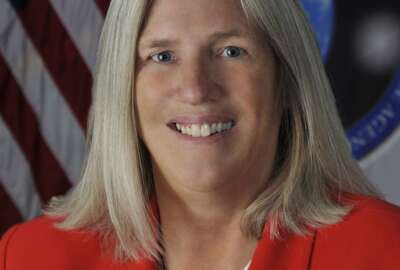
Agencies want to work with Silicon Valley, but is the feeling mutual?
On a quest for more innovative technology, more agencies are opening up satellite offices in Silicon Valley. But some start-ups and venture capitalists say work...
As more agencies move west, Silicon Valley vendors say government can’t knock at their door and expect innovative solutions to appear at its feet.
And agencies need to make it easier for Silicon Valley to engage with them, said Erwin Godoy, chief innovation strategist for the National Geospatial Intelligence Agency.
That starts with the acquisition process.
“If we don’t innovate with acquisition and contracts, it’s not worth having this conversation with you in Silicon Valley,” Godoy said May 18, during a DCode42 panel discussion with government and industry in Washington. “We have to have that on-ramp. We have to make it attractive.”
Some tech companies and venture capitalist firms that have worked with agencies in the past said government contracts are often too long, and the procurement and budgetary process presents too many unknowns.
“I’ve had cases where I went through a 15-month procurement cycle and the money disappeared in the end,” said Steven Rodriguez, founder of SineWave Ventures, and former special adviser to the Defense Department. “If you’re a small company, you cannot survive that, and your venture capital backers will crucify you for it.”
Chris Manouse, a senior director with Box, a content management company, said spending time and money with the federal government is a big bet for start-ups. If they know federal well, those Silicon Valley companies can see long-term value in working with agencies. But the prospect of receiving those benefits in the future is a hard sell for start-up CEOs in the Silicon Valley market, he said.
For Godoy, NGA’s job is to find new ways to innovate using the technology it buys from Silicon Valley.
“The whole intent is, how do we bend ourselves to industry?” he said. “How do we bend NGA strategy to industry, rather than having you guys do all the work? Frankly, we won’t work that way. … We want to be able to bring these things to a pilot, because technology by itself is not innovation. If people ask me, ‘Will Silicon Valley solve all our IT problems?’ I’d say no.”
Godoy said agencies can no longer expect start-ups to buy into a three or five year long contract.
“We have to change that mindset, because we want to go to shorter contracts, six-month contracts,” he said. “You know why? Because that facilitates innovation. It keeps competition. These large contracts stifle innovation, but we’ve done it to ourselves with our contracting practices.”
NGA is also beginning to ramp up the time it takes to test pilots — typically six months to a year — with its vendors, Godoy said. He also wants to add a few more incentives to the process.
“Based on that pilot [we should] be able to pay the Silicon Valley companies, the tech companies something … whether it’s $20,000 to $500,000, revenue is revenue,” he said. “We’re giving you some revenue to come in and pay me to do that pilot. We’re not asking for things for free, because in the federal government we like to ask for a lot of things for free.”
But the Silicon Valley mindset through organizations like the U.S. Digital Service (USDS) and 18F is gaining traction.
Emily Tavoulareas, founding member of the Digital Service at the Veterans Affairs Department, said that concept is helping the VA make better decisions when it buys and develops new technology.
“The opportunity we have … is to bring in what has worked in Silicon Valley to government, bring it back to government, because it was here once,” she said. “All we need to do is ask the right questions and prioritize solving problems over our own internal incentives.”
For digital service teams to make a lasting impression with their agencies, Tavoulareas said the organization’s managers should begin treating USDS technical leaders as a key component to their decision-making. Give them a seat at the table and allow them to present their usability research to the department’s executives, she said.
For example, VA leadership realized something needed to change when it saw usability research on veterans who apply online for health care. Veterans currently fill out a PDF application form, which the department built on Adobe several years ago. But Internet Explorer is the only browser that still automatically defaults Adobe.
“[Internet Explorer users] make up 7 percent of web traffic to the VA,” Tavoulareas said. “It’s not a crazy assumption to say approximately 90 percent cannot open it and use it. We tested this, and it’s true.”
Based on that feedback, the VA plans to release a new application for veterans health care soon, Tavoulareas said.
Copyright © 2024 Federal News Network. All rights reserved. This website is not intended for users located within the European Economic Area.
Nicole Ogrysko is a reporter for Federal News Network focusing on the federal workforce and federal pay and benefits.
Follow @nogryskoWFED
Related Stories





